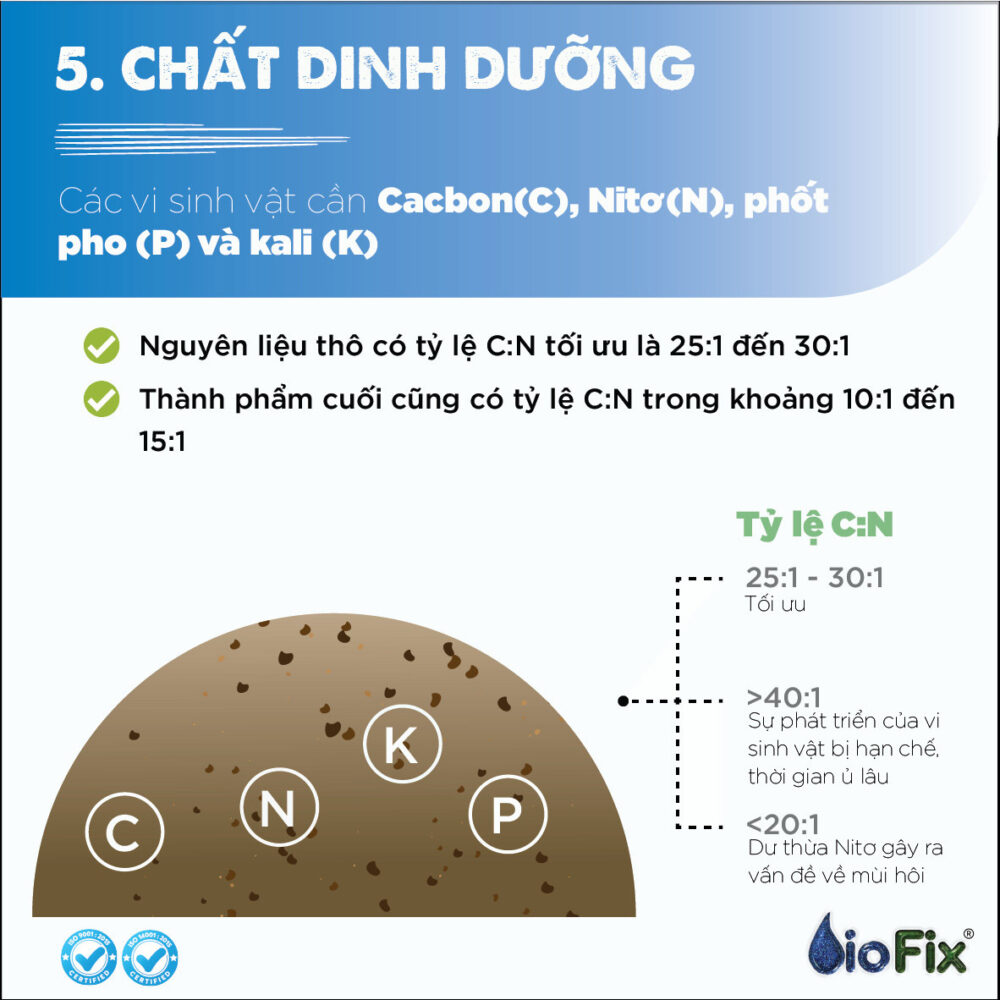Aerobic Annealing Process and Factors Affecting Aerobic Annealing
How does aerobic incubation take place?
Stage 1: Adaptation

Temperatures rise rapidly up to 65-700C during the first few days. First, thermophiles proliferate rapidly on available sugars and amino acids. They generate heat by their own metabolism and increase their temperature to the point where their activities become inhibited.
Stage 2: Growth
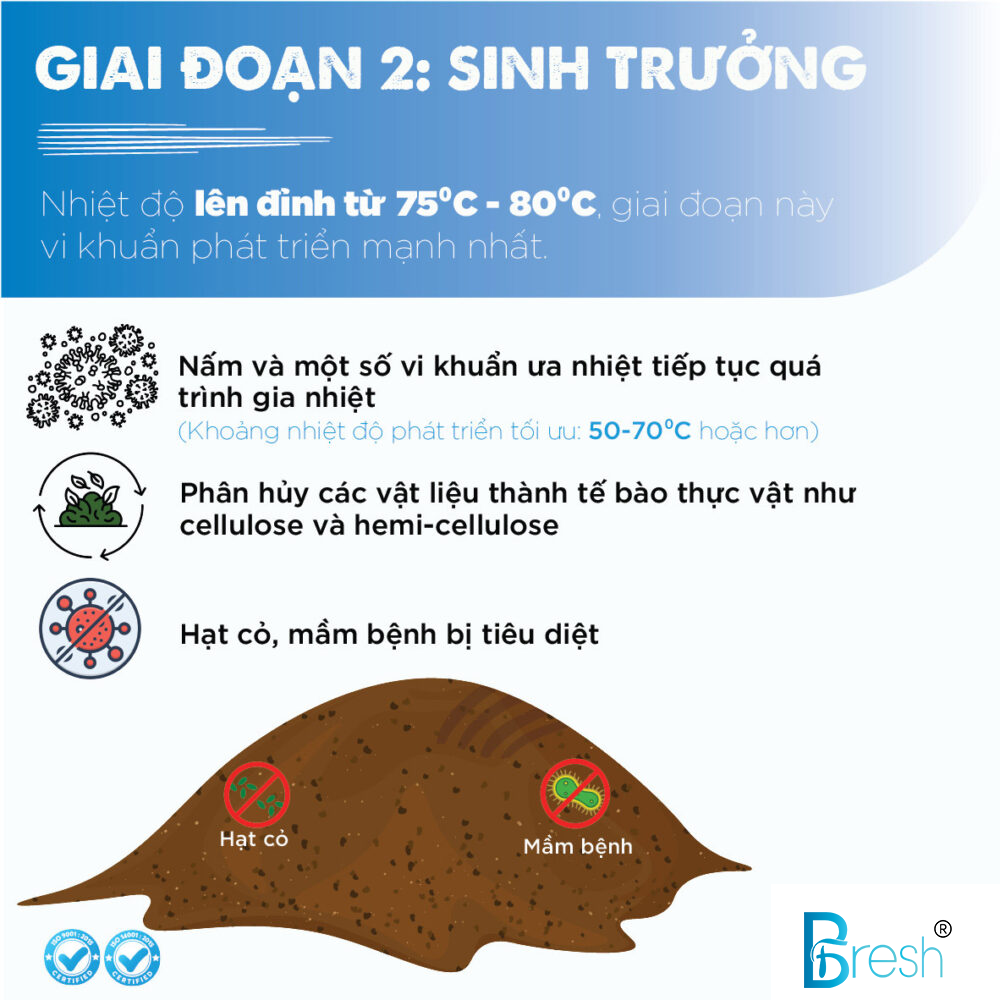
This is the period when bacteria grow the most. Some thermophilic fungi and some thermophilic bacteria (optimal temperature range: 50-700C or lower) continue the process, raising the temperature of the material to 75-800C or higher. This peak heating period is important to the quality of the compost because heat destroys pathogens and weed seeds.
Stage 3: Ripening

Eventually, the temperature drops below ambient temperature. By the time composting is completed, the compost will become more uniform and less biologically active even though thermophilic organisms regenerate the compost. The finished product has a color ranging from gray brown to black. The particles decrease in size, becoming consistent and have a soil-like texture. During this process, the amount of humus increases, the ratio of carbon to nitrogen (C:N) decreases, the pH neutralizes, the exchange capacity of the material increases.
Factors affecting the aerobic incubation process
Oxi
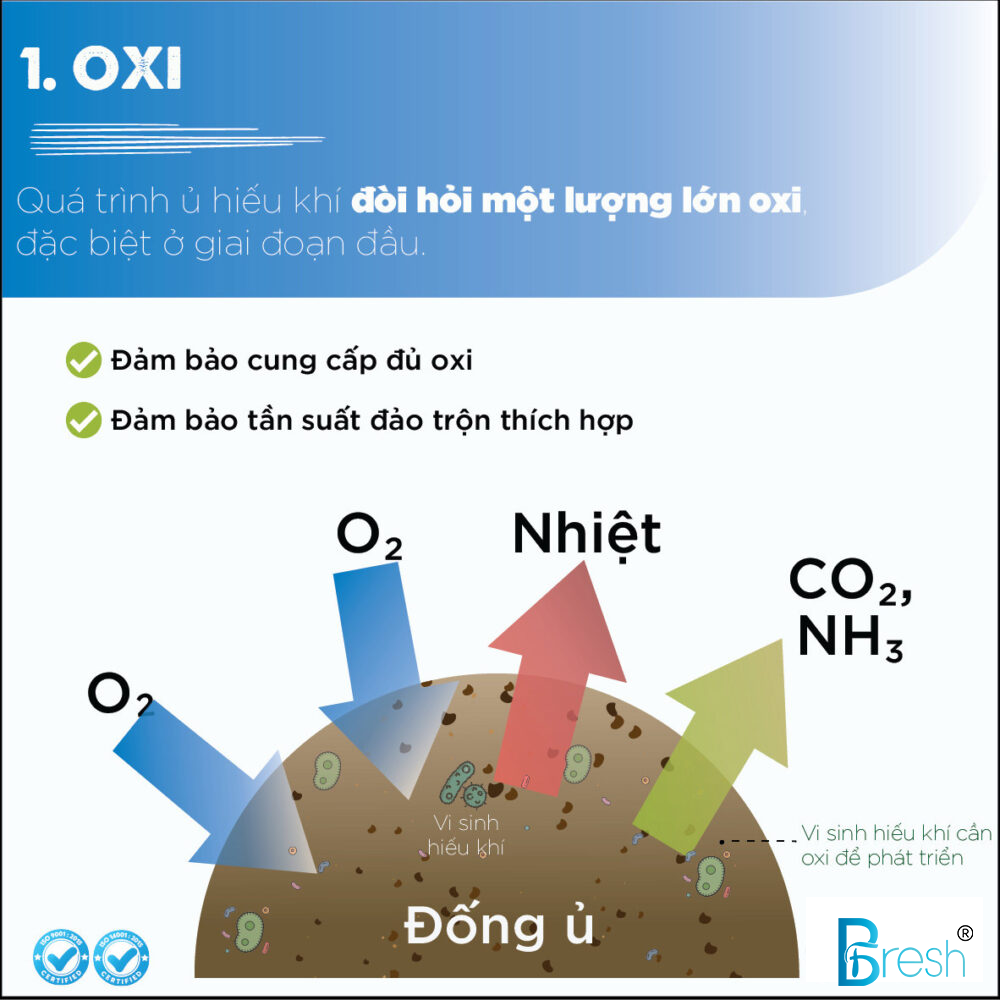
Aerobic composting requires a large amount of oxygen, especially in the early stages. Ensuring an adequate turning rate and therefore oxygen is essential for aerobic composting. If the oxygen supply is insufficient, the growth of aerobic microorganisms is limited, resulting in slower decomposition. Furthermore, turning removes excess heat, water vapor and other toxic gases.
Heat removal is particularly important in warm climates because of the risk of overheating. Good turning is therefore essential for efficient composting. This can be achieved by controlling the quality of the material (particle size and moisture content), the size and ventilation of the pile and by ensuring an adequate turning rate.
Humidity

Moisture is necessary to support the metabolic activity of microorganisms. The compost material should maintain a moisture content of 40 – 65%. Where the compost pile is too dry, the composting process is slower. If humidity exceeds 65% anaerobic conditions will develop. In practice, incubation should start at 50-60% humidity, finishing at around 30%.
Temperature
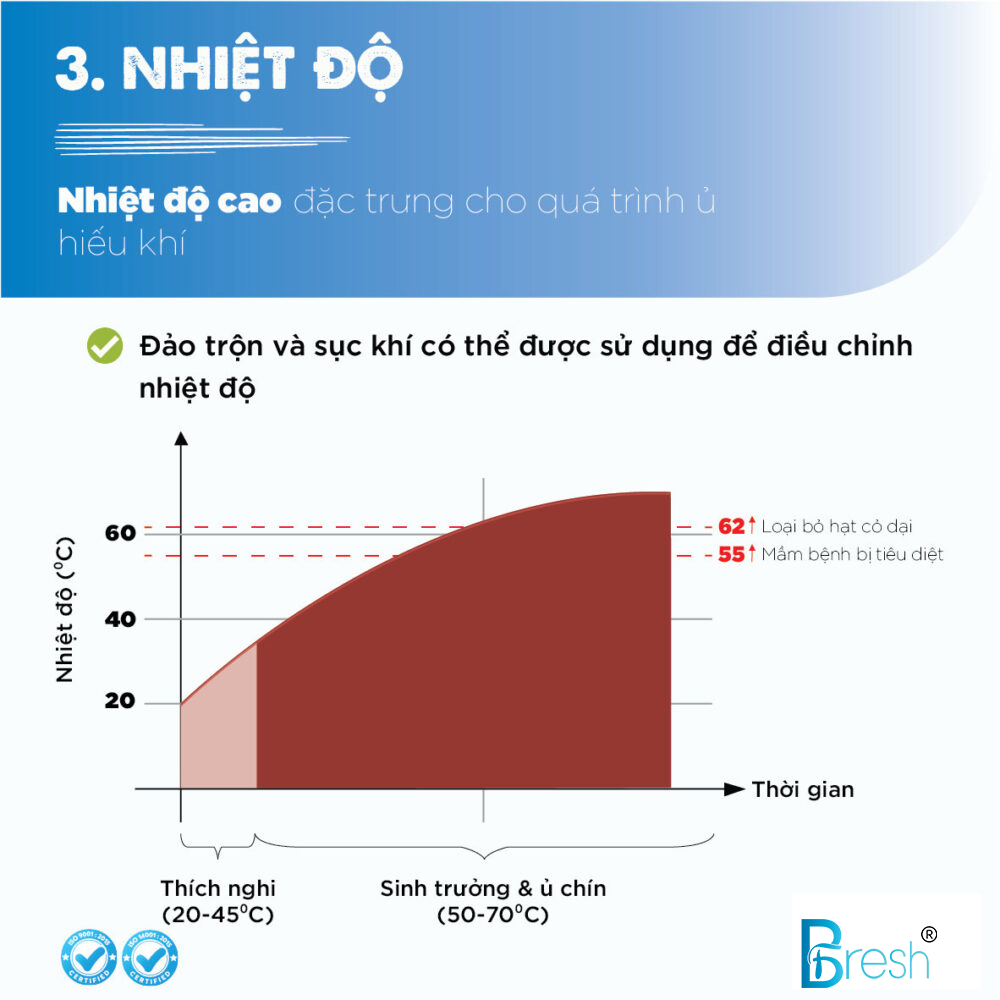
The analysis process includes two scopes. While the ideal temperature for the initial stage is 20-450C, in subsequent stages when thermophilic microorganisms take over, a temperature range of 50-700C may be ideal.Extremely high in temperature clumping process and is a sign of strong microbial dynamics. Pathogens are usually destroyed at 550C and above, while the critical point that can eliminate weed seeds is 620C.Reverse can be used to adjust temperature.
pH
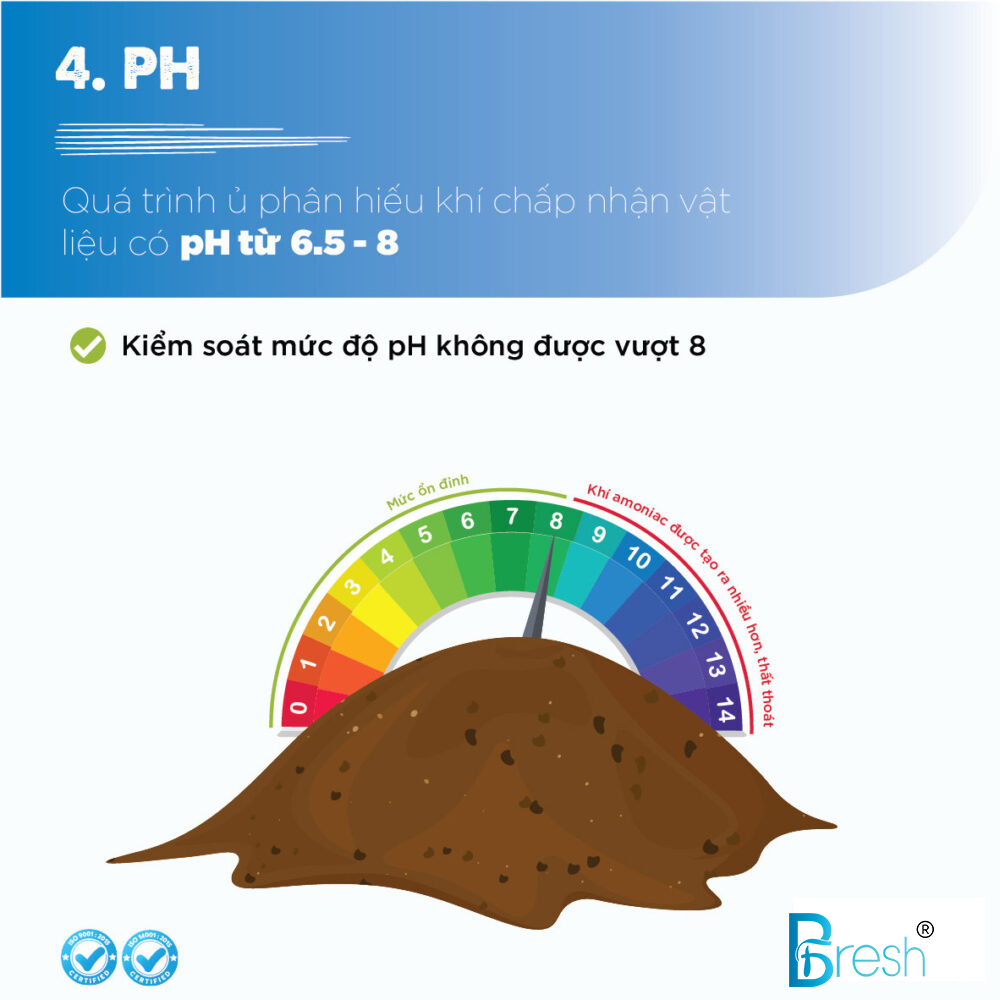
Although the natural buffering effect of composting has the effect of accepting material over a wide range of pH levels, pH levels should not exceed 8. At higher pH levels, more ammonia gas is produced and can can be lost to the atmosphere.
Nutrients
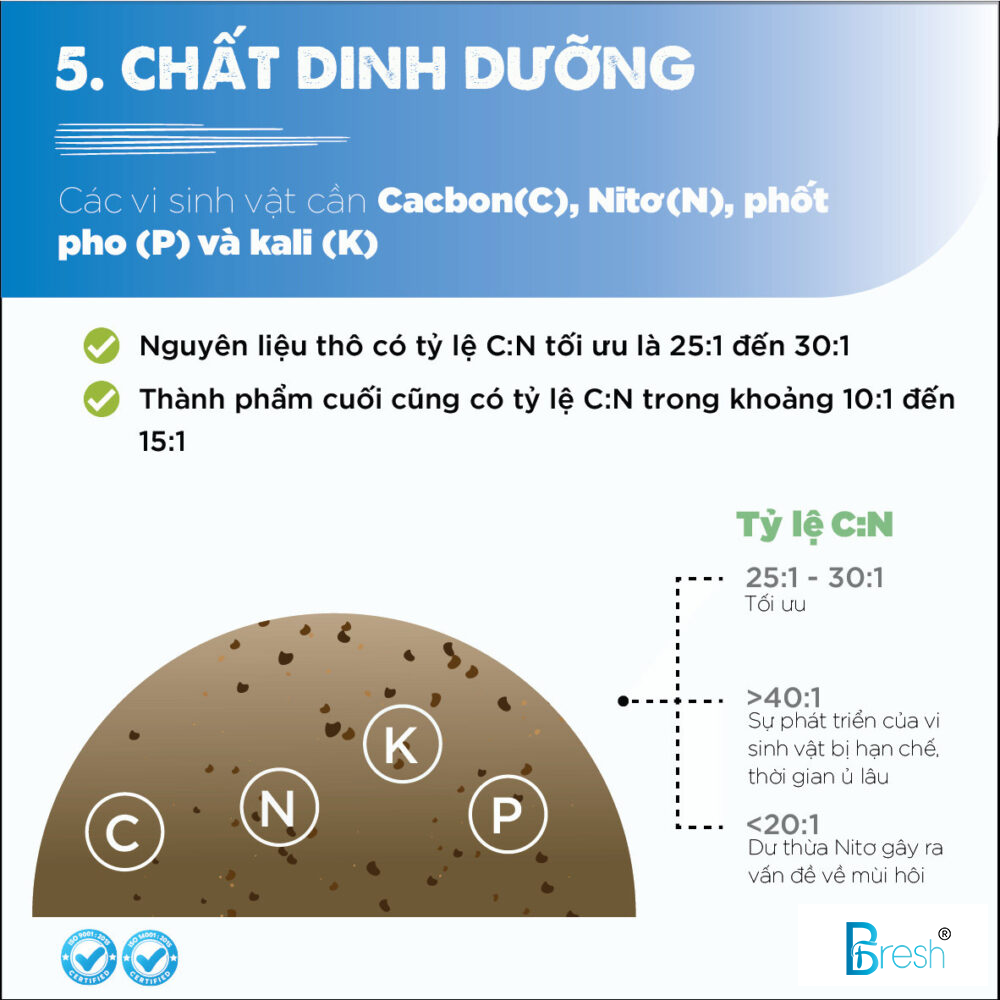
Microorganisms require C, N, phosphorus (P) and potassium (K) as primary nutrients. Of particular importance is the C:N ratio of the feedstock.
The optimal C:N ratio of raw materials is between 25:1 and 30:1.Where the C:N ratio is higher than 40:1, microbial growth is limited, resulting in longer composting times.A C:N ratio less than 20:1 leads to overuse of N, and the excess can be lost to the atmosphere as ammonia or nitrogen oxides and cause odor problems. The final product has a C:N ratio between 10:1 and 15:1.
Bài viết liên quan

Effective treatment of hotel wastewater with microbial preparations
Discover a safe and effective hotel wastewater treatment process with BioFix Fresh microbial products - a sustainable solution for hotel toilet wastewater, saving operating costs.
09-05-2025

BFresh men's urinal mat – Odorless and convenient cleaning solution
BFresh men's urinal mat – An odorless cleaning solution, preventing clogging, suitable for restaurants, hotels, offices.
08-05-2025

BioFix Fresh hosted the Seminar "Biological Era in Accommodation" in Da Nang.
Seminar "Biological Era" organized by BioFix Fresh in Da Nang with biological solutions in the accommodation service industry, towards sustainable development.
09-04-2025

BioFix Fresh attends VITAS' 25th anniversary celebration
BioFix Fresh attended the 25th anniversary celebration of VITAS, contributing microbiological solutions for wastewater treatment in the textile industry, and developing with businesses.
19-12-2024

5 effective ways to handle excess grease, simple to implement
In the article, BioFix Fresh guides 5 effective ways to handle grease, simple to apply to avoid clogging drain pipes, protecting the environment.
08-12-2024

Effective and cost-effective solutions for grease disposal in restaurants
Causes and consequences of grease blockage in restaurants. Highly effective and cost-effective solutions for grease disposal in restaurants.
08-12-2024

Effective grease treatment solutions for hotels and resorts
What are the consequences of waste grease on the wastewater treatment system of hotels and resorts? What is the optimal grease treatment solution for hotels and resorts today?
08-12-2024

Effective low-cost grease treatment solution for restaurants
Grease blockages in restaurants cause business disruption. BioFix Fresh will suggest effective grease removal solutions for restaurants.
08-12-2024

Suggestions for effective methods of treating grease in wastewater
Find out the causes of grease formation in wastewater. Measures to treat grease in wastewater are highly effective and are widely applied today.
08-12-2024

Summary of effective and thorough fat treatment methods
Is your drainage system clogged with grease giving you a headache? Check out these effective and thorough grease removal methods that are commonly used.
14-11-2024

Grease-treating microorganisms - effective treatment of clogged pipes
Learn about grease-treating microorganisms - the most effective solution for unclogging pipes today. Suggest some microbial preparations that are highly effective in treating grease.
14-10-2024

The most effective way to compost manure
Manure is an organic fertilizer from livestock and poultry manure, often mixed with straw. This fertilizer helps improve soil fertility, provide nutrients for plants, and improve soil structure.
26-07-2024

What is SVI? The role of SVI in wastewater treatment
What is SVI? SVI is the sludge volume index commonly used to measure the characteristics of a mixture of sludge and water or activated sludge (unit is milliliters/gram).
26-07-2024

What is a septic tank? Why periodically add probiotics to a septic tank?
Septic tanks are places that contain solid waste (such as feces, urine, grease, and some other organic waste, etc.) and this waste will be decomposed in the septic tank into liquid form.
26-07-2024

Wastewater treatment technologies
Scientists have found many advanced wastewater treatment technologies. Applicable to many different types of wastewater.
26-07-2024

What is anaerobic biotechnology? How does it work?
Anaerobic biotechnology is a method of using anaerobic microorganisms and facultative microorganisms to decompose organic and inorganic substances in wastewater.
26-07-2024

Cassava starch wastewater treatment
Cassava starch processing wastewater is rich in organic compounds, causing high pollution in starch factory effluents.
25-07-2024

Impact of excess oil and grease on the wastewater treatment system
Fats, oils and grease from cooking (vegetable oil, meat, milk) enter the drain through the sink, solidifying and causing blockages, broken drains and wastewater treatment problems.
25-07-2024

Operating principle of microbial fat treatment
The habit of pouring grease and leftover food directly into the sink repeatedly every day causes excess grease under the drain pipe to increase, combined with leftover food to clog the drain pipe.
25-07-2024

Water Indicator Microorganisms
Water indicator microorganisms, such as E. coli, are used to detect pollution and assess water quality, protecting public health.
25-07-2024

Bio powder turns dirty water into clean water in just a few minutes
Three-quarters of the world is covered with water, but less than 1% of it is usable water.Did you know that the percentage of "clean water" we use every day will decrease?
25-07-2024

Recycle organic waste into a source of fertilizer
Recycling organic waste into fertilizer reduces waste, creates natural nutrients, and minimizes chemical fertilizer use, benefiting health and the environment.
25-07-2024

What are the benefits of manure? Why is it necessary to compost before fertilizing?
Manure is an agricultural by-product from livestock, poultry, and processing activities, providing essential nutrients for plants.
25-07-2024

Aerobic Annealing Process and Factors Affecting Aerobic Annealing
Aerobic composting occurs in oxygen-rich conditions, where microorganisms decompose organic matter.
25-07-2024

Air conditioner cleaning tablets - Solution to deal with air conditioner blockage and odor
After a long time of use, air conditioners often emit unpleasant odors along with water blockage. Increase the possibility of respiratory infections.
20-07-2024

Aerobic and anaerobic composting methods
Anaerobic composting is a decomposition process that occurs using microorganisms that do not require oxygen to survive.
20-07-2024

BENEFITS OF COMPOSTING WITH MICROBIOLOGICAL ENZYMES
Manure, organic waste, sewage sludge,... are organic wastes rich in nutrients, bringing many benefits to plants and helping to improve the soil.
20-07-2024

Why is it said that biological measures are better than other measures?
What is the cause of clogged drain pipes that cause the sink to become clogged and the wastewater cannot drain?
20-07-2024











